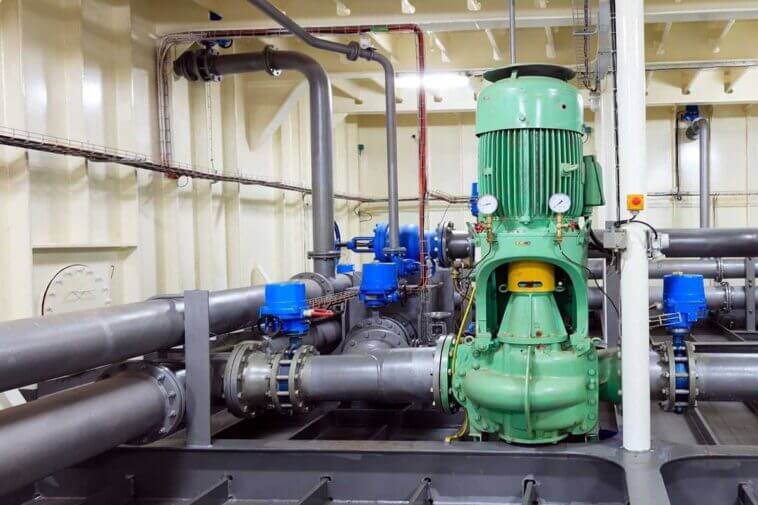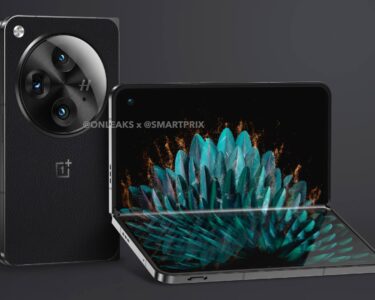Identifying the regulations that cover ancillary machinery equipment and systems is not always the easiest task. While things such as watertight doors do indeed have dedicated regulations concerned with their installation and use, others may be indirectly regulated in performance standards, and many not at all.
There is for example no requirement for ships to be fitted with air conditioning systems but SOLAS regulation V/15 guidelines for bridge design say The enclosed bridge or wheelhouse should be provided with air conditioning.
Pumps feature significantly in SOLAS, or at least mention of pumps does; for example in the regulations covering bilge pumping arrangements, fire-fighting, steering gear, watertight doors, and many more. However, while the condition of any pumps will be a factor in such things as Port State Control inspections and the issue of certificates, especially Safety Equipment certificates, the choice of pump types and individual capacities are generally not mandated.
Repairs to, or replacement of pumps and other equipment will in most cases need to meet class requirements and SOLAS suggest that special attention will be paid to the availability of equipment during all surveys.
It is not surprising that watertight doors receive plenty of attention from the IMO for their presence and proper operation is crucial to subdividing the hull below the waterline and preserving the integrity of the vessel in the event that the hull is breached. SOLAS is generally perceived as being a response to the loss of the *Titanic* but watertight doors predate that tragic ship that was fitted with several sets.
Both cargo and passenger ships must be subdivided but in a cargo vessel, most of the ship is subdivided by hold or tank bulkheads and below the tanktop by division into ballast spaces or bunker tanks. A passenger vessel by contrast does not have this natural subdivision and so more attention is paid in SOLAS regulations to separation below the bulkhead deck where store rooms, crew quarters, and machinery spaces are located.
Sub-dividing the ship is an obvious means of stopping the hull from flooding completely but the compartments must have openings to interconnect and that is where watertight doors come in. The main requirements are contained in SOLAS Chapter II-1 Construction – Structure, subdivision and stability, machinery and electrical installations, and more specifically in Part B-2 regulations 13 through 17 relating specifically to passenger ships.
Stepping back to Part B-1 regulation 4.3 it is stated Ships shall be as efficiently subdivided as possible having regard to the nature of the service for which they are intended. The degree of subdivision shall vary with the subdivision length (Ls) of the ship and with the service, in such a manner that the highest degree of subdivision corresponds with the ships of greatest subdivision length (Ls), primarily engaged in the carriage of passengers.
This is in line with the fact that damage stability – and consequently subdivision – is based on a probabilistic concept that requires an in-depth knowledge of naval architecture but which can simply be interpreted as demanding a higher degree of subdivision for longer vessels based on the number of passengers carried.
Regulation 4 and subsequent regulations expand upon the number of compartments and doors permitted. Allowance is made for working conditions but Regulation 13.1 does state that `the number of openings in watertight bulkheads shall be reduced to the minimum compatible with the design and proper working of the ship; satisfactory means shall be provided for closing these openings.`
Obviously, a door is only watertight when it is closed but this could be disruptive to the efficient operation of the ship if every door had to be opened and closed each time someone needed to pass through it. This is because to be watertight the door must be sealed and capable of withstanding immense pressures. Thus they are heavy and have locking mechanisms.
Regulation 13.5.1 requires that all watertight doors (except as provided in paragraph 9.1 or regulation 14) shall be power-operated sliding doors and capable of being closed simultaneously from a central operating console at the navigation bridge in not more than 60 seconds with the ship in the upright position.
Regulation 13.5.2 demands that the means of operation, whether by power or by hand, of any power-operated sliding watertight door shall be capable of closing the door with the ship listed to 15┬░ either way. Consideration shall also be given to the forces which may act on either side of the door as may be experienced when water is flowing through the opening, applying a static head equivalent to a water height of at least 1 m above the sill on the centreline of the door. SOLAS requires that the location and means of closing watertight doors must be included in all damage control plans and booklets.
Operational details of watertight doors and other water ingress-related equipment are covered by sections B3 and B4 of SOLAS. In the 2014 edition of SOLAS Regulations 22 and 23 are of particular interest.
Following the flooding of several vessels, notably the Costa Concordia in 2012, the IMO undertook a review of regulations around the operation of watertight doors. In February 2015, the Sub-Committee on Ship Design and Construction (SDC), agreed amendments with a view of approval by MSC 95 in June 2015 and subsequent adoption.
MSC 95 approved the draft amendments to SOLAS regulation II-1/22 to clarify when watertight doors may be opened during a voyage. The MSC also approved, in principle, Guidance for watertight doors on passenger ships that may be opened during navigation, which included appendices, containing:
procedure for the determination of the impact of open watertight doors on the passenger
technical standards for watertight doors on passenger ships;
flowchart on Guidance for permitting watertight doors on passenger ships to remain open during navigation; and
illustration of the application of the floatability assessment under hazardous conditions in the Guidance.
The amendments deleted the existing SOLAS `Regulation II-1/22.4, which allowed for certain watertight doors to be permitted to remain open during navigation only if considered absolutely necessary, including if being open is determined essential to the safe and effective operation of the ship’s machinery; or to permit passengers normally unrestricted access throughout the passenger area.`
The new regulation still permits a watertight door to be opened during navigation to permit the passage of passengers or crew, or when work in the immediate vicinity of the door necessitates it being opened. The door must be immediately closed when transit through the door is complete or when the task which necessitated it being open is finished.
Although cargo ships are less liable to flooding than passenger’s vessels, through the 1980s and towards the end of the 20th century, a number of bulk carriers were lost due to holds becoming flooded. As a consequence in 2004, it became a requirement for all bulk carriers to be fitted with a water ingress alarm.
As already mentioned, regulations concerning pumps are sprinkled liberally throughout SOLAS and the various codes connected with the main text. Fire pumps and fire-fighting systems) are covered in other sections of the knowledge base so regulations concerning them are not repeated here.
Of the major regulations covering pumps perhaps the most important is that covering bilge pumping arrangements. These are contained in **Chapter II-1, Regulation 35-1** and were included following reviews into watertight doors and flooding of passenger ships so they apply only to ships constructed on or after 1 January 2009.
The regulation at 35-1 section 2 states An efficient bilge pumping system shall be provided, capable of pumping from and draining any watertight compartment other than a space permanently appropriated for the carriage of fresh water, water ballast, oil fuel or liquid cargo and for which other efficient means of pumping are provided, under all practical conditions. Efficient means shall be provided for draining water from insulated holds. Sanitary, ballast, and general service pumps may be accepted as independent power bilge pumps if fitted with the necessary connections to the bilge pumping system.
More detailed arrangements for passenger ships are given in **Regulation 35-1 section 3**. This uses a formula to calculate the number of pumps needed which will never be less than three power pumps one of which may be driven by the propulsion machinery.
Where practicable, the power bilge pumps shall be placed in separate watertight compartments and so arranged or situated that these compartments will not be flooded by the same damage. If the main propulsion machinery, auxiliary machinery, and boilers are in two or more watertight compartments, the pumps available for bilge service shall be distributed as far as is possible throughout these compartments.
The same regulation continues in later sections to set out additional requirements for vessels above 91.5m in length.
Mostly these are concerned with redundancy but there is also a requirement that at least one power bilge pump shall be available for use in all flooding conditions that the ship is required to withstand and the option of at least one of the required bilge pumps to be an emergency pump of a reliable submersible type having a source of power situated above the bulkhead deck or the bilge pumps and their sources of power shall be so distributed throughout the length of the ship that at least one pump in an undamaged compartment will be available.
SOLAS requires that each power bilge pump shall be capable of pumping water through the required main bilge pipe at a speed of not less than 2 m/s.
The bilge pumping requirements for cargo ships are much less prescriptive and say only that at least two power pumps connected to the main bilge system shall be provided, one of which may be driven by the propulsion machinery. If the Administration is satisfied that the safety of the ship is not impaired, bilge pumping arrangements may be dispensed with in particular compartments.
Closely related to pumps, compressors are found on every ship and are used in a variety of applications. A compressor is merely a pump designed to move air rather than a liquid but whereas a pump is complete on its own, a compressor is usually twinned with an air receiver where the compressed air is stored until needed.
SOLAS contains relatively few direct references to compressors but many more to pressurized air systems, air receivers, and starting arrangements as well as one reference to the need for a compressor to provide breathing air for fire-fighting on passenger ships built after 2010 carrying more than 36 passengers.
Obviously, pressurized air must be produced and supplied by a compressor and therefore working compressors are implied essentials in SOLAS under several regulations. Particularly mentioned are the starting arrangements for main engines and emergency auxiliary engines and service air for boilers.
Compressors are also used in refrigeration and cooling systems where the compressed gas is not air but a refrigerant gas. The first refrigeration systems installed on ships in the early 20th century used natural refrigerants such as ammonia and carbon dioxide. After the invention of more efficient CFCs in 1929, almost all refrigeration plants dropped the natural products in favor of CFCs and, later, HCFCs. However, the Montreal Protocol of 1987 – an international treaty designed to protect the ozone layer by phasing out the production of numerous substances that are responsible for ozone depletion – spelled the end for CFCs and HCFCs, forcing the development of alternative HFC gases.
The Montreal Protocol and its amendments laid down a rolling phase-out program that saw new plants using HCFCs banned in most countries from 2015, while the gas itself will become illegal in 2030. The European Union has adopted a much tougher stance for installations on ships flagged in EU member states. Under **Regulation 2037/2000** of 29 June 2000, new plants were banned from 2004 and as of 1 January 2010 the use of virgin HCFCs for maintenance and servicing of refrigeration and air condition plants was prohibited.
Existing stocks and recovered refrigerants were allowed to be supplied until 1 January 2015 meaning some plants will still likely be operating with these gases but will need to change at the next replenishment.





